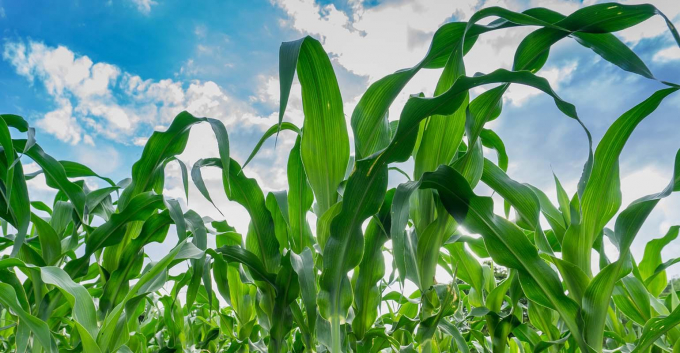October 12, 2025 | 08:49 GMT +7
October 12, 2025 | 08:49 GMT +7
Hotline: 0913.378.918
October 12, 2025 | 08:49 GMT +7
Hotline: 0913.378.918

Soybeans saw a similar scenario – while the percent of the crop rated in good-to-excellent condition held steady, the amount of corn rated “excellent” tracked a point higher this past week.
Corn quality saw 64% of the crop rated in good-to-excellent condition through Sunday, sliding a point lower from a week ago. However, last week’s good-to-excellent split was 54/11, while the current data suggests a 51/13 split. Even so, analysts were expecting to see a one-point improvement this past week. Another 28% of the crop is rated fair (down a point from last week), with the remaining 8% rated poor or very poor (up two points from last week).
Physiologically, 4% of the crop has reached silking stage, predictably starting in southern states like Tennessee (67%) and North Carolina (52%). The prior nationwide average among the top 18 production states is 6%.
Soybean quality also moved unevenly this past week. While the overall percentage of the crop rated in good-to-excellent condition held steady, at 60%, the ratio moved from 51/9 to 50/10. Like corn ratings, analysts were expecting to see a one-point gain. Another 31% of the crop is rated fair, with the remaining 9% rated poor or very poor – all unchanged from a week ago.
Physiologically, 96% of the crop is now emerged, versus the prior five-year average of 92%. And 14% of the crop is already blooming, up from 5% a week ago and faster than the prior five-year average of 11%.
Winter wheat quality ratings retreated a point lower, with 48% of the crop rated in good-to-excellent condition through Sunday. Another 31% of the crop is rated fair (unchanged from last week), with the remaining 21% rated poor or very poor (up a point from a week ago).
Harvest is moving a bit faster than analysts anticipated, reaching 33% completion versus the average trade guess of 30%. This year’s pace is still behind 2020’s mark of 39% and the prior five-year average of 40%, however.
Spring wheat ratings fell even more than anticipated, losing another seven points with just 20% now rated in good-to-excellent condition. Analysts were expecting to see a two-point drop this past week. Another 41% is rated fair (up five points from last week), with the remaining 39% rated poor or very poor (up two points from a week ago).
Nearly half (48%) of this year’s spring wheat crop is now headed, up from 27% a week ago and coming in much faster than 2020’s pace of 33% and the prior five-year average of 39%.
Click here to read the latest USDA crop progress report for additional information on cotton, rice, peanuts, sorghum, sunflowers and more.
(farmprogress.com)

(VAN) The World Health Organization (WHO) has launched an emergency response operation, delivering 852,000 water purification tablets to northern and central provinces severely affected by Typhoon Matmo or Typhoon No. 10.

(VAN) The Vietnam Veterinary Science and Technology Association held a thematic workshop titled 'Update on African Swine Fever - Biosecurity solutions for disease prevention.'

(VAN) Through innovative lessons, pedagogy students are gradually spreading disaster prevention and response skills to every student, every family, and every community.

(VAN) The infrastructure support project for high-quality rice areas will have special financial mechanisms to invest in irrigation works and technology transfer.

(VAN) Vice President Kaja Kallas acknowledged Vietnam’s significant progress in combating IUU and announced that an EU IUU inspection team will visit to conduct work in November 2025.

(VAN) Sponsored by UNIS Hanoi, the Gaia Earth installation will be open to the public from 29 October to 1 November.

(VAN) Acting Minister Tran Duc Thang received the Finnish Ambassador and agreed to promote the signing of a MoU on cooperation in environment and hydrometeorology on the occasion of General Secretary To Lam’s visit.